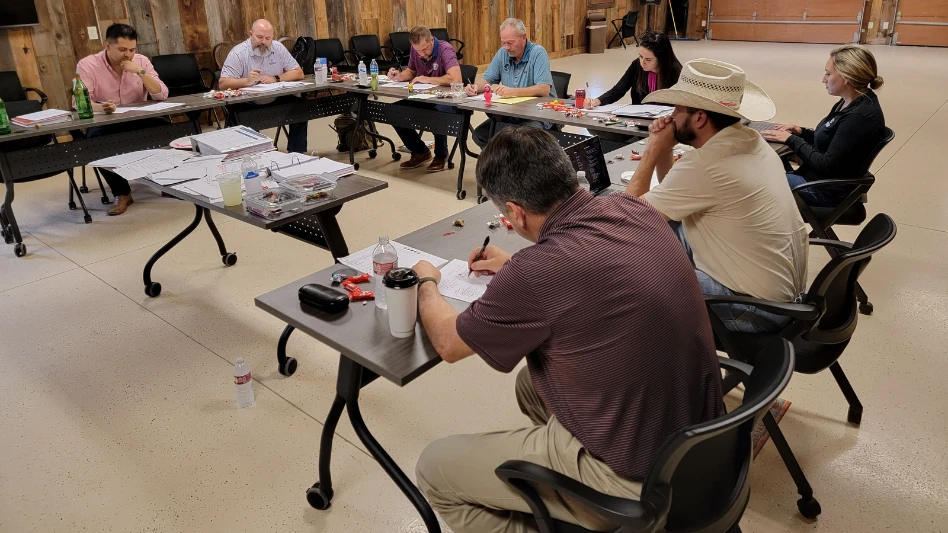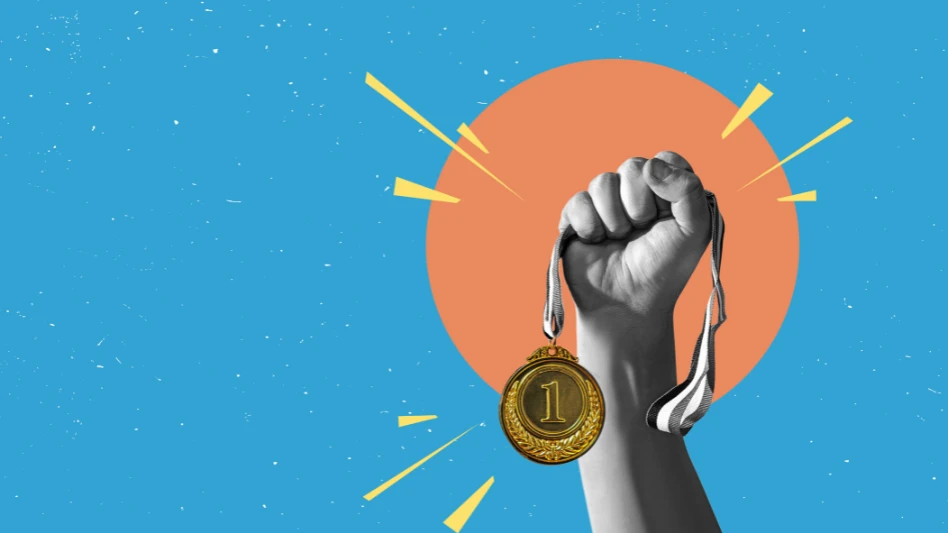
 A xeriscape garden or landscape combines some of the biggest buzzwords in the landscape industry: pollinator-friendly, low-maintenance and drought-tolerant. Xeriscapes often incorporate all kinds of eco-friendly components like native plants, pollinator-friendly flowers, rain barrels, compost and more. But the defining feature of a xeriscape is that it’s designed with plants that don’t need much, if any, supplemental water.
A xeriscape garden or landscape combines some of the biggest buzzwords in the landscape industry: pollinator-friendly, low-maintenance and drought-tolerant. Xeriscapes often incorporate all kinds of eco-friendly components like native plants, pollinator-friendly flowers, rain barrels, compost and more. But the defining feature of a xeriscape is that it’s designed with plants that don’t need much, if any, supplemental water.
Although the concept was originally designed for arid or semi-arid climates, there are lots of benefits in northern climates as well. There’s the lower water cost, less runoff, decreased disease, lower maintenance and increased pollinator support. But the results can also be uniquely beautiful.
While many think that eco-friendly gardening is a sacrifice, Sean James, president of Fern Ridge Landscaping & Eco-consulting in Milton, Ontario, sees it as an opportunity. He’s passionate about the idea that xeriscaping should be just as beautiful as any other type of garden or landscape.
“If you have a dry hillside or a low, wet area, you can plant plants that nobody else can, and you can make your landscape shine out from everyone else’s, which is really what a lot of gardeners are trying to do,” he says.
Aside from the lower or nonexistent watering requirements, the plants tend to grow healthier with deep roots. And less water means fewer opportunities for disease to set in. For example, a summer phlox grown in a traditional landscape is an easy target for powdery mildew. But in a xeriscape, the plants grow shorter and more compact, but also thinner, so there isn’t as much of a cluster of stems, which allows for air movement.
Plus, with deeper roots, plants are soaking up more micronutrients, which helps keep them happy and healthy. “If you’re matching your plants to the soil and the conditions, then it’s less work,” James says. “I know in my business, no one ever calls me for something like the Palace of Versailles. The first thing everyone says is they’re looking for low-maintenance.”
Show customers the benefits.
 Low-maintenance and eco-friendly are huge selling points for a xeriscape. According to a February 2014 Pew Research Center survey, 39 percent of Americans consider themselves environmentalists. But in James’ experience, they often don’t say so.
Low-maintenance and eco-friendly are huge selling points for a xeriscape. According to a February 2014 Pew Research Center survey, 39 percent of Americans consider themselves environmentalists. But in James’ experience, they often don’t say so.
“If you ask them, they’ll say ‘no, no, no’ because they don’t know much about it as far as landscaping goes, so they often don’t want to look like they don’t know what they’re doing so they just say no,” he says. “But if you show a xeriscape to customers, they get interested.”
Communicating those benefits is key to getting customers on board and building good relationships. “As a landscaper, it makes you look really good if you’re looking out for the customer’s best interest financially, and more and more, for the environment’s best interest,” James says. “So many people are eco-minded right now.”
But if customers hear the words drought-tolerant and xeriscape before they know how beautiful it can be, many are unwilling to consider the idea. That’s why you have to show them, rather than tell them what you can do. And communicating the low effort, cost savings and environmental benefits can really make you stand out from the crowd.
“It’s really a missed niche from a professional point of view in many cases,” James says. “I think a lot of landscapers could build their businesses by marketing that they’re doing these projects and that it’s all of the above: saving money, saving water and saving the environment.”
|
Pick the right players
“There are so many plants out there,” he says. “It’s not a question of being limited by the circumstance; it’s a question of learning the palette of plants that are available.” James recommends paying attention to what works in nature. Prairie plants like deer’s tongue grass are great options, as are native plants like wild ginger and various ferns. He’s also a big fan of nativars, which are cultivars of native plants. People always tell James that you can’t garden in dry shade. “Well, go for a walk in the woods and you’ll be amazed at how green the forest floor is because the plants are adapted to those situations,” he says. And don’t feel like you have to start from scratch. Existing plants that are thriving in the garden will tell you what does well in that area. “I find there’s a tendency to become a garden snob and I’m forever fighting it,” he says. “I think there’s a danger in shunning a plant because it used to be common.” |
Make it work.
To start a successful xeriscape, the first year is critical. Although the goal of a xeriscape is to thrive without supplemental water, irrigation is necessary until the plants get established.
But before you start planting, soil amendment is a must, says Bobbie Schwartz of Bobbie’s Green Thumb, just outside of Cleveland. Without the proper drainage, xeriscape plants will get root rot, particularly during the winter. “Soil amendment is crucial,” she says. “It won’t succeed without the proper soil amendment.” So before Schwartz does anything else, she adds enlarged shale called Haydite to help break up the heavy clay in Ohio soils.
She also adds an organic material like a leaf humus or compost to add microorganisms to the soil. This helps the soil retain water and make it available to the plants when they need it.
In Ontario, James puts down 2 inches of composted pine mulch, but says that any rich compost will do. “That keeps the water in. It cools the soil in the summer and keeps it warm in the winter, and obviously adds nutrients to the plants. It does all of the things mulch will do, but it keeps the water in the soil.
After that, it’s just a matter of the perfect design, taking into account form, texture, foliage, flowering time and all of the other considerations of any other landscape, only with drought-tolerant plants.
Another trick of James’ is to leave the garden standing until spring. He cuts down perennials and throws in all of the bed material, then mulches and puts it back on the garden. “So all those micronutrients from the deep soil are also serving to keep the plants healthier and happier, and fight the diseases they might encounter,” he says. You’re going to have less disease and fewer insect problems and healthier plants overall with xeriscaping.”

Water wisely
Sean James, president of Fern Ridge Landscaping & Eco-consulting in Milton, Ontario, says that xeriscaping isn’t about using no water; it’s about using water the smart way. After watering to establish a xeriscape in the first year, some need no supplemental irrigation. But if a customer really wants to have rhododendrons, there are ways to accommodate that. “It doesn’t mean you can’t have water in the garden,” he says.
 James notes that you can even include a lawn in a xeriscape if you use a variety like RTF Water Saver, a tall fescue that spreads like Kentucky Bluegrass, but has a 6-foot-deep root system. It’s all about knowing what will survive the summer in your area.
James notes that you can even include a lawn in a xeriscape if you use a variety like RTF Water Saver, a tall fescue that spreads like Kentucky Bluegrass, but has a 6-foot-deep root system. It’s all about knowing what will survive the summer in your area.
And it’s important during the height of summer to make sure a xeriscape isn’t drying out. During the July/August heat wave, James will spot water when necessary. “It’s a good idea to have supplemental irrigation there for emergencies,” he says.
James uses drip irrigation to maximize the amount of water reaching the plant, and uses smart irrigators to measure the soil moisture. “You need to educate your customers … showing them what, where, why, how and when is a big deal,” he says. “Don’t just set it up but tell them the guidelines: irrigate early in the morning, here’s how you use a rain barrel.”
Often, James will set up a rain barrel with a sweating hose through the garden. Then, the homeowner just has to open the valve a few days after it rains, and make sure to close it again to catch more rain. “That way the water goes right into the roots of the plants, so now you’re even saving infrastructure as far as stormwater goes because you’re reducing the off-flow from your property to the stormwater system,” he says.

Explore the March 2015 Issue
Check out more from this issue and find your next story to read.
Latest from Lawn & Landscape
- LMN partners with Attentive.ai
- Get to know the generations working for you
- Addressing addiction in landscaping
- Fairway expands national footprint with 6 acquisitions
- Graze Robotics opens new headquarters in Plano, Texas
- Addiction in the green industry
- Kress earns Sourcewell approval
- The best laid plans
 A xeriscape doesn’t have to be all cactus and sedum. It can be just as beautiful, and sometimes more stunning, than a traditional landscape. It’s all about knowing the plant palette. In southern Ontario, Sean James of Fern Ridge Landscaping says there are so many options that a gardener will never get bored.
A xeriscape doesn’t have to be all cactus and sedum. It can be just as beautiful, and sometimes more stunning, than a traditional landscape. It’s all about knowing the plant palette. In southern Ontario, Sean James of Fern Ridge Landscaping says there are so many options that a gardener will never get bored.




